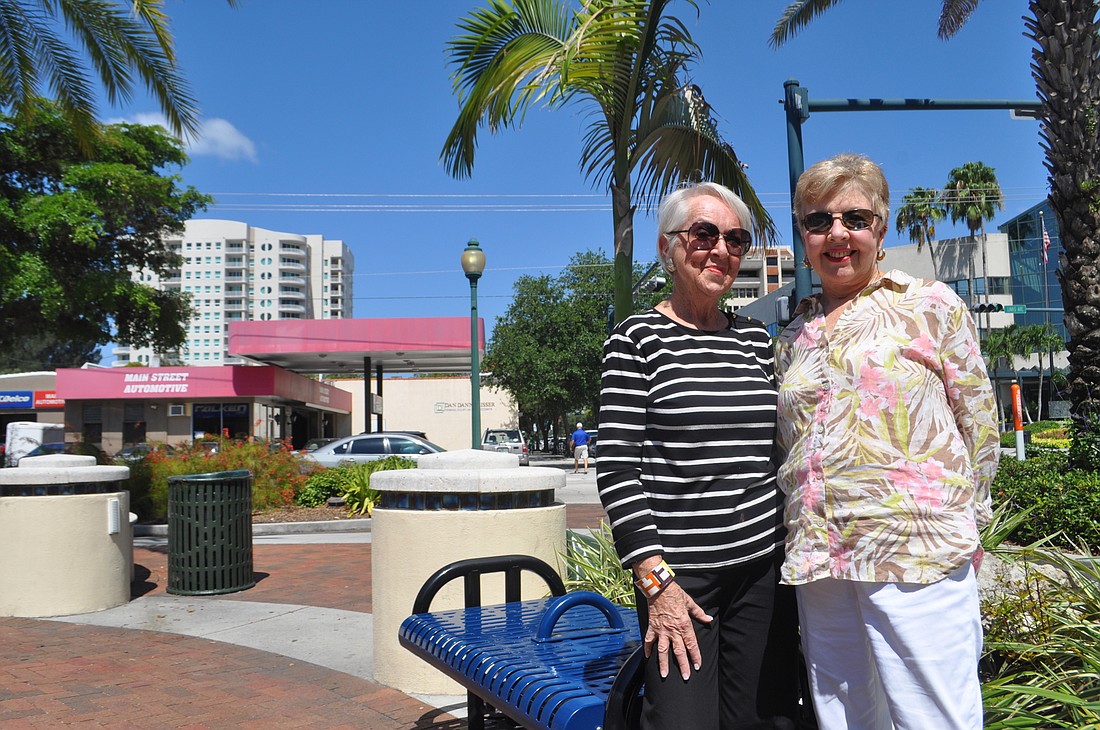- December 13, 2025
-
-
Loading

Loading

At a City Commission meeting in May, a conversation about missing trees on Main Street gave Jude Levy flashbacks to the mid-2000s.
Levy was an original member of Save Our Sarasota, a group formed about a decade ago to preserve the public realm downtown. Although the issues the organization considered were wide-ranging at first, encompassing topics such as affordable housing, tree preservation eventually became its leading priority.
A flashpoint for the group was the construction of 1350 Main, completed in 2007. Residents upset with the arcade that allowed the developer to build over the public right of way — removing trees in the process — staged a funeral for those trees, attempting to draw attention to what they saw as a growing issue.
The group advocated for the value of trees in an urban environment, urging skeptical leaders and businesses to emulate cities such as New York and Chicago, both of which had recently placed an emphasis on increasing its landscaping footprint.
“We went on a massive kind of education plan to let the merchants know that — you know what, people prefer trees where they shop, where they eat,” Levy said. “It lowers the temperature and absorbs the rainwater and cleans the air and on and on and on.”
Eventually, after more than five years of work, the commission formally adopted a downtown green space policy in 2011. For Levy, that seemed to be the end of it. The group’s hard work paid off, and the city had become aware of the importance of preserving its trees.
That’s why, when she heard about a pair of trees removed from the 1500 block of Main Street earlier this year, she was immediately brought back to the drawn-out fight she thought was already won. Even though it turned out they had been removed for valid reasons — the city was replacing two trees whose roots were dislodging brick pavers — she was worried that nobody was aware they were going to be removed to begin with.
In the subsequent weeks, she saw converging issues with trees throughout the city. At Links Plaza, three black olive trees in a public space were removed and replaced to improve the visibility of a nearby business. In several residential neighborhoods, people complained that large trees were being illegally removed to accommodate the construction of new houses. In other areas, oversized trucks driving on small streets damaged trees.
"I thought maybe it was time to wake people up and educate people again." — Jude Levy, Save Our Sarasota
Perhaps most significantly, Levy found little evidence the green space policy was having a meaningful impact on the city. It was seldom referred to in discussions among policy makers, and Levy couldn’t locate a copy of it on the city website. With tree preservation concerns coming to a head and new officials in positions of power, she felt it was time for action.
“Once I realized the green space policy was buried, I thought maybe it was time to wake people up and educate people again,” Levy said.
As a result, Save Our Sarasota is back off the ground. Working alongside downtown resident Barbara Campo, Levy has had talks with residents in neighborhoods like Tahiti Park and Hudson Bayou, where tree preservation has been a major issue. The group had its first meeting Wednesday night, a discussion with city staff and an opportunity to connect with citizens dedicated to highlighting the value trees have among city residents.
“We want to educate people and hopefully let them see how much these trees mean to us,” Levy said. “Unfortunately, trees — they don't have a group. We're that group.”